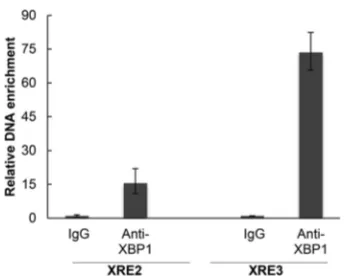Induction of Kaposi's Sarcoma-Associated Herpesvirus-Encoded Viral Interleukin-6 by X-Box Binding Protein 1
Full text
Figure




Related documents
Furthermore, these studies suggest that this interaction is functionally im- portant based on the following evidence: (i) RSV-F from A2- or cp -52-infected cell lysates, from a
Reservoir type (Unidirectional): The buccal patch designed in a reservoir system contains a cavity for the drug and additives separate from the adhesive. An impermeable
6 According to the 2009 Budget Act as well as the Action Plans of the relevant Operational Programmes, funding from the two main sources will be around ~€250m ( Research
Syed Muhammad Rashid bin Syed Muhammad Baqa bin Syed Muhammad Imam bin Syed Fateh Muhammad bin Syed Shukurallah bin Syed Othman bin Shah Khatan bin Shah Sanjar bin Shah Bolan bin
In summary, we want to mention that high fre quency JV, bronchoscopy and Tshaped stent im plantation for patients with critical double tracheal, laryngeal stenosis is
Transport control protocol is used by many application layer protocols like the HyperText Transfer Protocol (HTTP) .TCP is connection oriented and it maintains information
To describe the demographic features of women diagnosed with genital warts, the characteristics of genital warts seen and treatment modalities used, and to determine the type of
elegans and have successfully identified genes involved in fundamental biological processes including fat metabolism (Ashrafi et al., 2003), ageing (Lee et al., 2003; Murphy et

